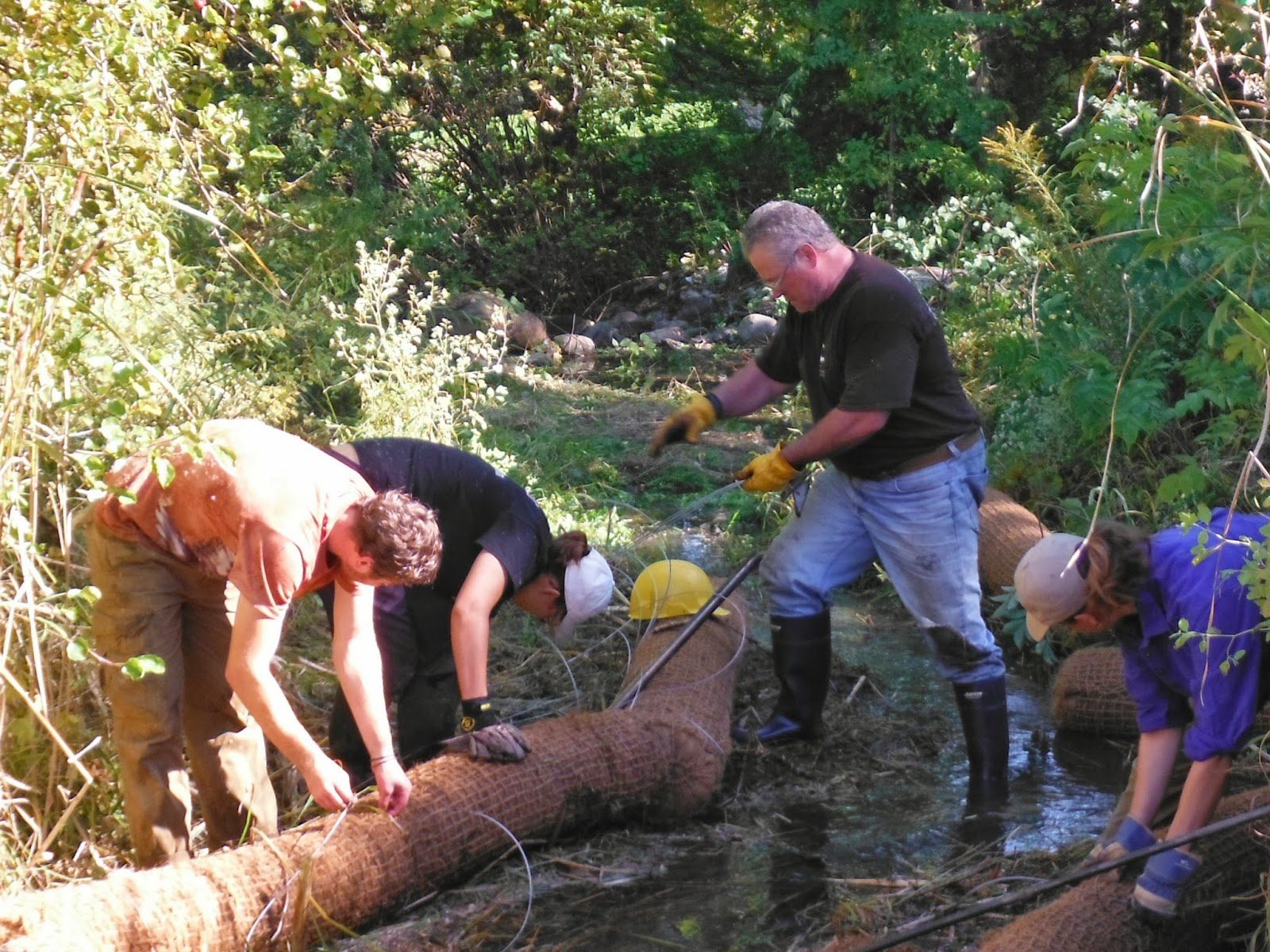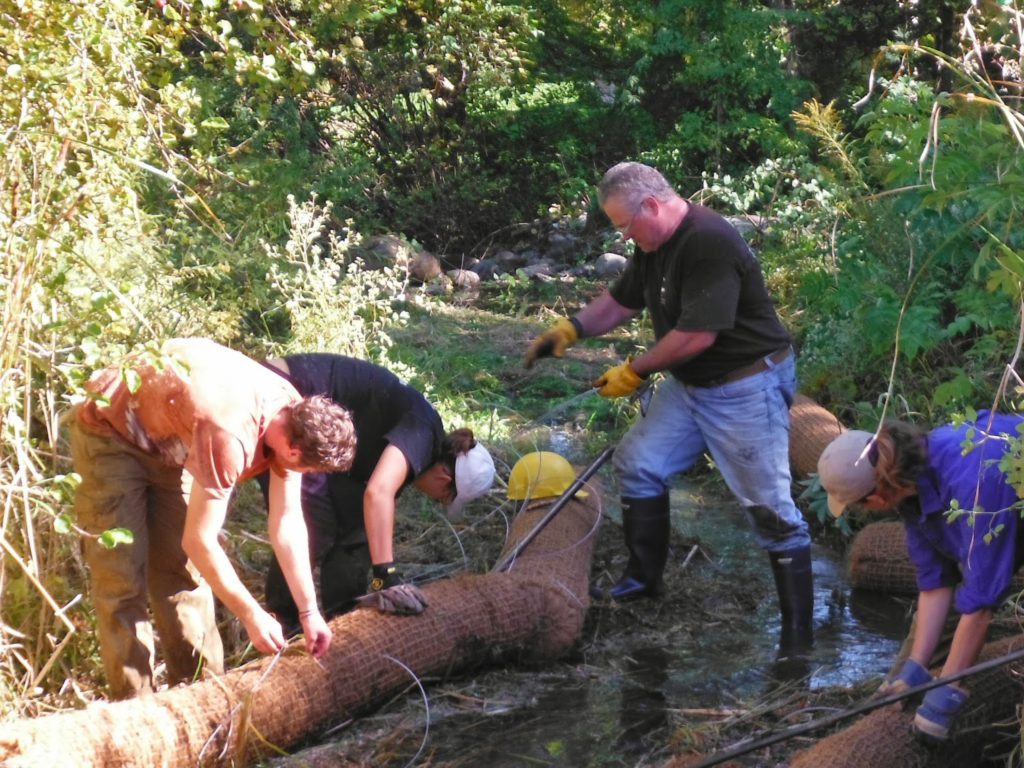We could not have been luckier today; it was dry, warm and the winds were calm. The “dry” was really important for this first stage of our project as even a small rain event would have caused a significant discharge from the stormwater pond into the stream where we planned to work. Also, the coir logs, seen below, while fairly light when dry, are quick to wick up moisture, making them pretty unwieldy when wet!
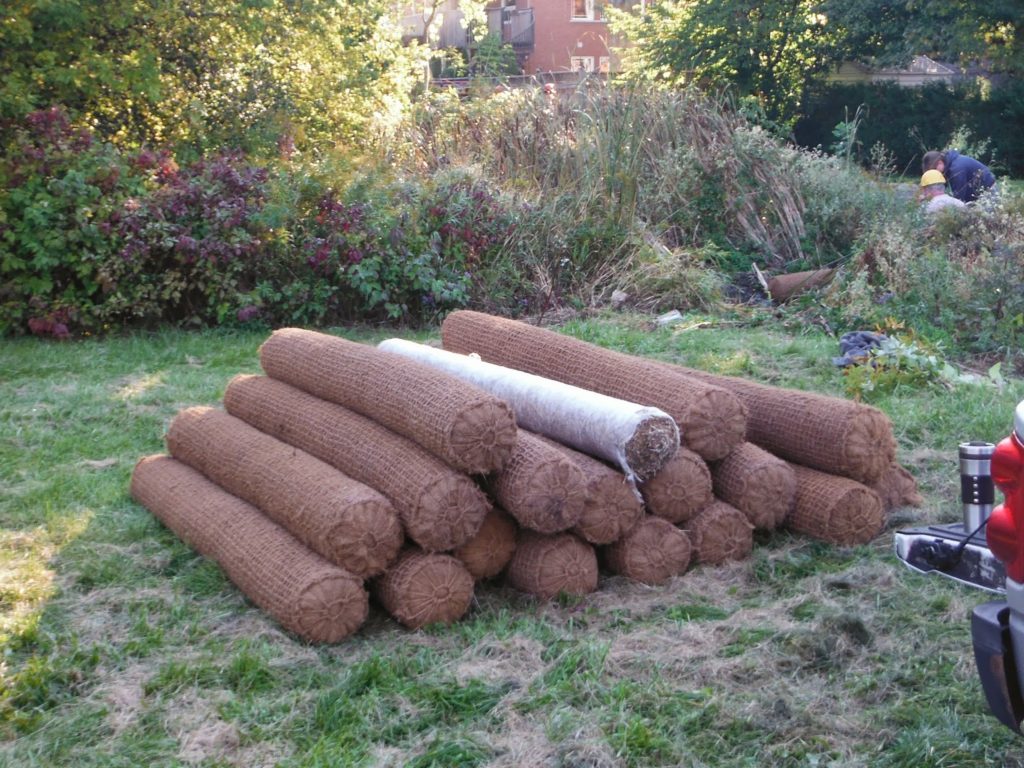
As volunteers began to arrive, our table was quickly set up and covered with educational materials on native plants, stream health and brook trout. The CSSP “Stream Improvement Project” signs easily communicated to passers-by what all the hustle and bustle was about. And right from start we had curious neighbours with fantastic questions stopping to chat. An adjacent homeowner decided to don a CSSP T-shirt and join the team for the afternoon. This kind of community engagement is invaluable as our friends and neighbours have gained a better understanding of the stream project, and can provide excellent feedback to the restoration team in the future.
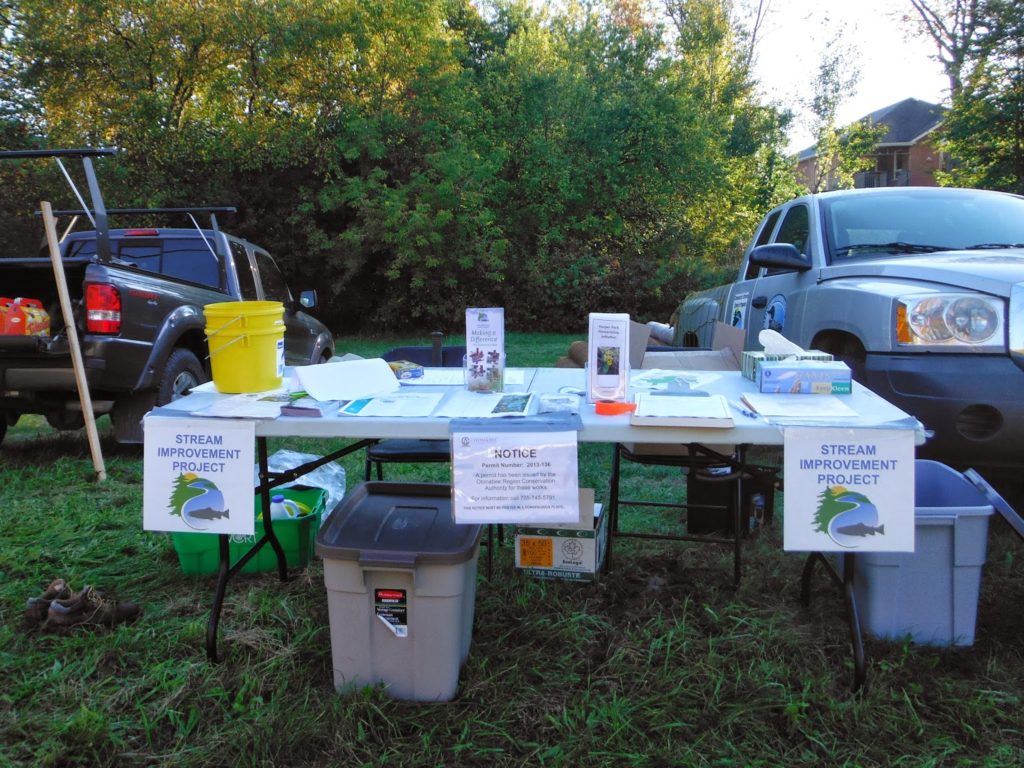
Not long after we arrived, the City of Peterborough’s forestry team joined us. Experts at selecting and removing invasive trees, European Buckthorn and Manitoba Maples were soon quickly removed by this team of four, and fed through the wood chipper.
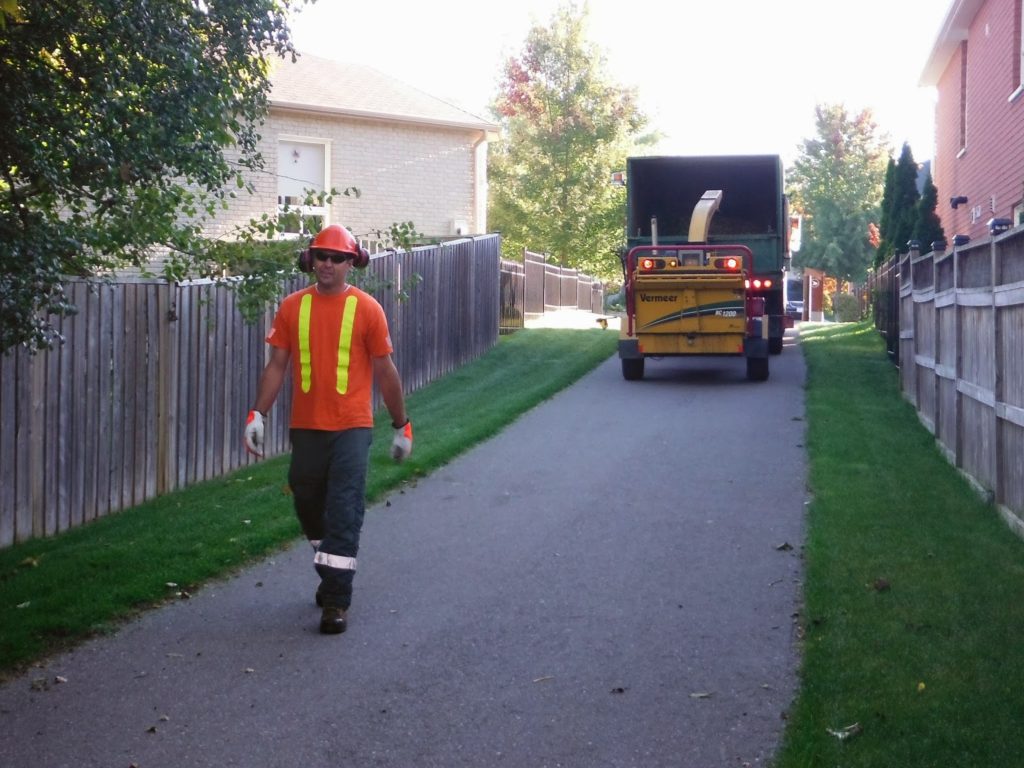
Our work started with removal of stream side vegetation, primarily cattails and a plethora of buckthorn saplings. Once a small area was opened adjacent to the stream channel, the coir logs were anchored in place redefining banks for the stream that follow the creeks natural meanders.
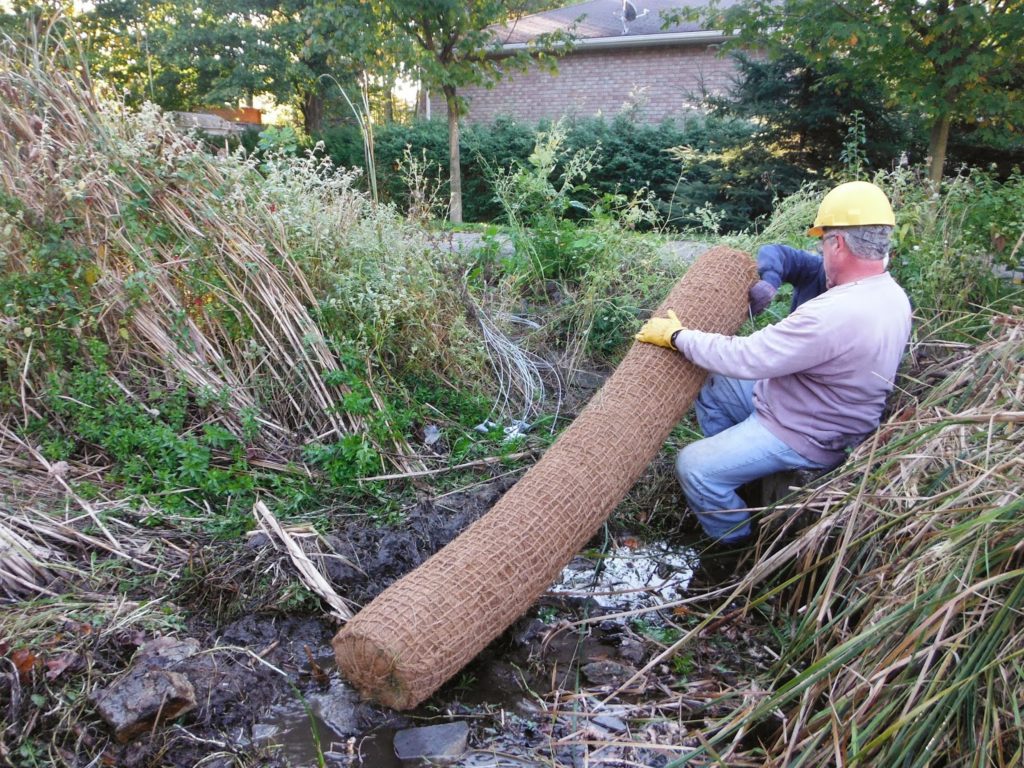
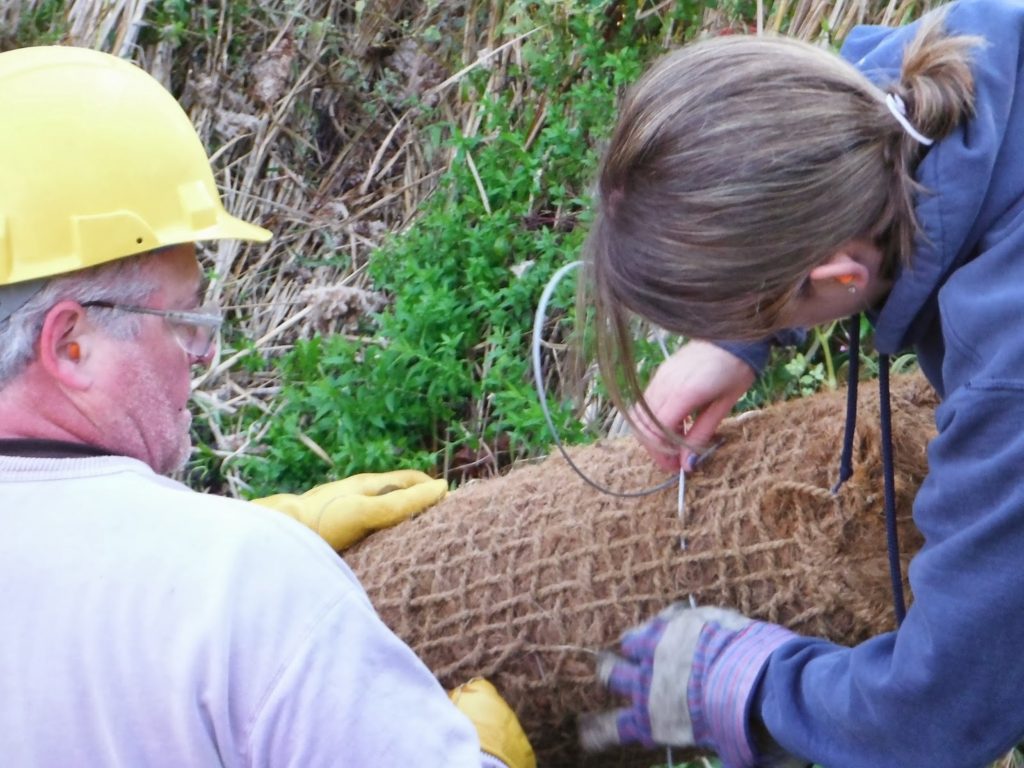
And so it was a happy ending and all of the coir logs, but the two saved for demonstration purposes (they will be installed tomorrow) were anchored in place today; a job well done by tireless volunteers! A straw erosion blanket was unrolled along the cleared stream side, and tomorrow we plant!
